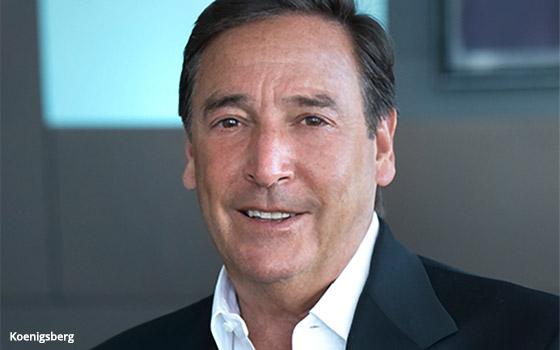
“The inventory goes down the elevator every night,” Fairfax Mastic Cone, founder of Foote, Cone & Belding
During a visit to his New York
headquarters leading up to this award, Bill Koenigsberg did what he has done each year since moving Horizon Media to its Tribeca neighborhood in 2010: He showed off his offices.
“Shhhhh,” he admonished me as we stepped into the agency’s “meditation room,” peeking around its dimly lit corners to see if any of his staff were in
repose.
No one was there, so I whispered, “Do you ever get to use it?”
I’m not sure he heard, because he answered by whisking me off to the
next stop on the Horizon office tour: the agency’s health and wellness center, a fully staffed medical facility provided as a benefit to employees.
Then we paused to watch a
film production crew shooting a location scene for one of the many professional TV and movie shoots that use Horizon’s digs as a set.
“I wonder what they’re
filming,” he said to me rhetorically, before casually bringing up his investment in Katie Couric’s media company, the aptly named Katie Couric Media, which he also lists as one of
his portfolio companies in Horizon’s org chart.
Next we sauntered to a series of open-design work areas, conference rooms and a small auditorium filled with people wearing
blue suits — not exactly Horizon’s Downtown Casual dress code.
He turned to one of his employees sitting in an open-air work area facing the glass-enclosed auditorium and
asked: “What’s going on?”
“I don’t know,” the embarrassed man stammered.
“You just ruined that guy’s day,” I
said as Koenigsberg whisked me off to his personal conference room.
“I know, you’re right,” he said, chuckling empathetically.
I’ve taken versions of this tour
many times before, but there was something in the way Koenigsberg described his office space, his staff and the organization he has built over 29 years that reinforced why Horizon had become the best
media agency in 2018: its people.
For all the ad industry’s talk of technology, it’s still people who are an agency’s greatest resource and biggest differentiator. It’s
people who run and interpret the results of the best of the best machines built and used by the industry.
And Koenigsberg’s most important insight in 2018 is the same one that
fueled the great agencies of the Golden Age of advertising a century ago.
He understands that if what Foote, Cone & Belding founder Fairfax Cone famously said --
“The inventory goes down the elevator every night” -- is true, then it’s the responsibility of any great agency founder to keep that inventory and draw the best from them.
The best agencies do that by creating a culture where the best people want to work, so when Koenigsberg shows off his offices, he’s really saying, “Look what an awesome place I
built for people to work.”
It’s a virtuous cycle, because the more inventory he attracts, the more business he attracts — which in turn allows him to attract
more people with more talents and expertise to attract more new business.
Sure, Horizon has all the buzzworthy, bell and whistle areas of innovation -- practices like his aptly
named channel planning area of expertise “Where,” or his analytics group “Why.” But it isn’t the buzzwords that make them work. It’s the people Horizon
attracts.
So when Koenigsberg flips through the latest version of Horizon’s pitch deck, the most notable frame isn’t the squinty, Lumascape-esque eye chart on
page six, delineating the “40+” specialist units he’s cobbled together and branded as distinct service practices and offerings. It’s the one on page five that precedes it,
which shows Horizon’s actual inventory, beginning in 1989 with “1” person and culminating in 2018 with 2,300.
I remember meeting with Koenigsberg and his
original partner Bill Miller when they spun Horizon off from the in-house media service of broadcast group operator Media General, and pitched how they planned to build the next great media services
agency. It was a pitch I’d heard many time before and since — the same one J. Walter Thompson media renegade Richard Kostyra made when he broke off Media First International, or when Steve
Farella and Audrey Siegel created Targetcast.
They all work because those agency founders all had the same keen insight: that the media services business is highly diversified,
there are clients looking for alternatives from independent brands, and if you put in the sweat equity, you will attract the talent to attract the business that begets success.
The difference in Horizon’s case is that it remains fiercely independent. It’s the biggest independent media services agency since Dennis Holt sold Western International Media to
Interpublic.
As Holt generated with Western, there is endless speculation about when Koenigsberg will sell Horizon. And as he heads into the nice round number of
Horizon’s 30th anniversary this year, speculation will peak.
But for now Koenigsberg seems content with growing his business the old-fashioned way: attracting the best people in
the industry to run it.